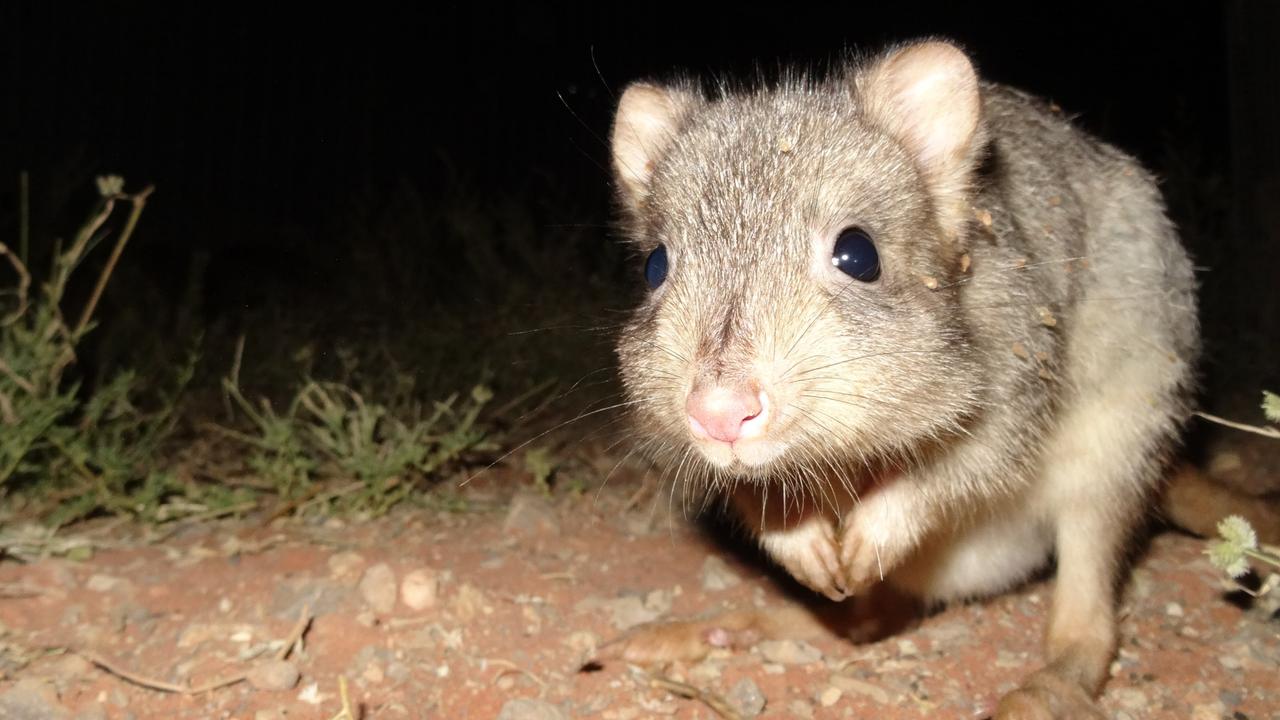Footage claims to show Tasmanian tiger roaming Adelaide Hills
EXPERTS have watched video footage that claims to show a Tasmanian tiger, or thylacine, roaming the Adelaide Hills. Here’s their verdict on what some say is a genuine sighting of a species thought extinct for decades. Watch the video and tell us what you think
SA News
Don't miss out on the headlines from SA News. Followed categories will be added to My News.
- Special report: The fight to save SA’s endangered species
- SA’s hidden treasures — The museum’s priceless stuffed thylacines
- SA X-Files — ever heard of the Tantanoola tiger?
- University of Adelaide study reveals what killed off the thylacine
VIDEO footage purporting to show a Tasmanian tiger, or thylacine, roaming the Adelaide Hills has been released to a mixture of excitement and scepticism.
Thylacines have officially been classified as extinct for decades but there have been numerous claimed sightings in that time, both in Tasmania and on mainland Australia.
The Thylacine Awareness Group of Australia released the footage ahead of Threatened Species Day on Wednesday.
Founder Neil Waters says the “much talked about and highly anticipated video” taken in February shows an animal believed to be the same mainland thylacine first seen by “five people in broad daylight in March last year”.
“This year in February, it returned and we were lucky enough to have someone there who grabbed about three seconds’ worth of footage before it darted off into the creek,” he said.
“This footage is the first of five possible thylacine videos we plan to release over the coming weeks.”

But the video experts at Storyful are not convinced. Verification journalist Kevin Nguyen says the first video does not prove the existence of a thylacine in Adelaide Hills.
“Dissecting the footage the men provided us frame-by-frame, we can understand how similarities with a Tasmanian tiger can be seen — particularly its tail — but the visual evidence is not conclusive,” he said.
“The dark discolouration the video authors said they see is not visible to us and the quality is too poor to comfortably make distinctions between stripes, shadows or pixilation.”
The global leader in social news also encourages critical analysis of content, beyond simply looking at a video at face value.
“Storyful has looked at a lot of social media, including animal rescue groups and police reports, and so far found no reference to any strange animal sightings in the relevant area from that time,” Mr Nguyen said.
“Thylacines are hypercarnivores and if they were indeed perusing a suburban neighbourhood, one would expect some evidence in the form of traces of animal carcasses.”
However, he said it was “important to keep an open mind about the situation, and not discount out of hand the presence of the animal”.
At the South Australian Museum, mammals senior researcher Dr Cath Kemper met with Mr Waters and watched the video, but she struggled to see any definitive proof.
“We looked at it quite a few times and I couldn’t say either way, you know, it’s too blurry, but
it’s interesting,” she said.
“He pointed to the base of the tail and he said it looks like it has a thicker tail at the base, which is sort of a thylacine characteristic, but I said I’m sorry, I don’t see that in this.
“You never know, if they do get a real picture of a thylacine or something, then they’ll be laughing at us. I’d quite like that actually, wouldn’t that be nice.”
Mr Waters wants people to share the post on the Facebook group page “in order to raise a few $$ on YouTube to fund the filming and editing of our upcoming series of mini-documentaries on thylacines and other cryptic animals still believed to be roaming the Australian mainland today”. “This video is dedicated to Syd Slee, a farmer and naturalist and a strong advocate for the consideration of the continual existence of thylacines on the mainland of Australia,” Mr Waters said.
“The fight to prove what we all know to be true isn’t over yet folks, but we will get there eventually. This video is proof that we are seriously on to something.”
He says the footage is of international interest and his group is “on the cusp of proving the existence of the thylacine, not in Tasmania but in mainland Australia”.
“Threatened Species Day commemorates the 80th anniversary of the passing of Benjamin, the last thylacine to die in captivity in Beaumaris Zoo in Hobart, Tasmania in 1936,” Mr Waters said.
“But since then, there has been over a thousand sightings of thylacines in Tasmania, and nearly 5000 on mainland Australia — and South Australia has had its fair share of those sightings.”
The team collects information and evidence of thylacine activity.
DON’T MISS: Tuesday in The Advertiser’s Education section: Our animals in danger
The thylacine, or Tasmanian tiger
This mysterious animal that looked like a large dog is believed extinct. Some scientists believe its numbers may have declined as a result of competing for food with the dingo, or possibly being hunted by humans protecting their livestock.
According to the Australian Museum, there is evidence to suggest Aboriginal people in Tasmania hunted the thylacine for food.

In 1830 a bounty was introduced in Tasmania paying one pound per thylacine and after 2184 bounties were paid in 1909, the scheme was terminated.
In 1926 the London Zoo bought a thylacine for £150 and the last one was captured in 1933 for the Hobart Zoo. In 1936 it was added to the list of protected wildlife and by 1986 was declared extinct internationally.
What is known is the animal was shy and avoided contact with humans. Those animals that were captured often died quickly from shock.
Fossils and Aboriginal rock paintings show that the thylacine once lived throughout Australia and New Guinea.
Many searches and sightings have been recorded over the years but there is no conclusive evidence to support the thylacine still exists. It is considered “probably extinct”.
A mummified carcass of a thylacine has been found in a cave on the Nullarbor Plain. Recent reports suggest the possibility of cloning the species but according to the Tasmanian Parks and Wildlife website it is unlikely to happen.
“Even if there did exist a few remaining individuals, it is unlikely that such a tiny population would be able to maintain a sufficient genetic diversity to allow for the viable perpetuation of the species in the long-term,’’ the website said.
— Martina Simos


